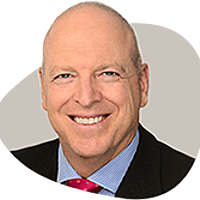A safer way to protect your savings
If the underlying purpose of investing is to preserve and grow your purchasing power, then the biggest conundrum is surely defining the value of a dollar – especially as printing presses in almost every nation are switched to full blast.
This is perhaps bold for me to say, but I think as a society we’ll look back on this period in 20 years’ time and observe that monetary authorities around the world orchestrated one of the biggest ever thefts of investor savings. Central banks globally are trying to build a bridge across the pandemic-induced valley by reducing the cost of money. As a result, the yield curve has been crushed, in turn forcing investors to take more risks in search of income.
I imagine the reader saying, "this means you're calling out inflation." I’m not, but inflation is certainly relevant to your purchasing power if the way authorities traditionally measure it ties up with your personal expenditure patterns. While inflation is at record lows, I would suggest it certainly isn’t running at less than 2% when it comes to things like:
- buying a second-hand car
- paying private school fees
- financing medical procedures
- purchasing a property, furnishing one or even renting,
- heading off on a domestic holiday.
For each of the above purchases, among others, inflation is significantly higher. For me, inflation is really when more money chases a volume of goods and services that is either the same or lower. Even acquiring items as basic as shoes and groceries demonstrates hidden inflation. While the price point has not changed on these items, there’s been a hiatus in promotional discounts because demand is high.
The other facet of this conundrum in the currency-to-value ratio is that most asset classes are at nosebleed valuation levels. The defensive asset classes that can help individuals tread water in preserving purchasing power aren’t really working: you can't hide in cash because you're not getting anything for it; fixed interest is problematic; and property yields are very low.
And there’s an additional layer of bifurcation in today’s equity markets: how do you avoid the nosebleed valuations on the one hand, and the value traps on the other? I’m seeing a lot of investor FOMO (fear of missing out) and TINA (there is no alternative) to equities, and then there’s FONGO (fear of not getting out).
Our solution is a laser-like focus on businesses with “hard assets”, which we define as those assets that provide operators with pricing power to monetise them for their owners in most circumstances.
These assets can take different forms to achieve this.
● Contractual: whereby there is solid counterparty risk. Waypoint REIT has this, as the landlord to Coles’s Shell-branded petrol stations.
● Scarcity: either by unique locations or licenses.
● Regulatory: think toll roads and Transurban.
● Intellectual property: coupled with scale, for example CSL or ResMed.
● Resources: iron ore or gold companies where you can find the lowest-cost producers run by competent and honest management teams with debt-free balance sheets.
These represent hard assets, as they should preserve their underlying fundamental value in real terms.
Conclusion
Hiding in the defensive assets of cash and negative interest-yielding bonds after two decades of kicking the can down the road with ever lower interest rates may have bad outcomes. And attempting to value high-growth blue sky stocks using discounted cashflow models, when the real medium-term cost of money is at peak uncertainty, may also bring nasty surprises. Fairly-valued hard assets appear to a safer way to preserve the purchasing power of your hard-earned savings.
One Thing Investors Can't Ignore in 2021
The above wire is part of Livewire's exclusive series looking at The One Thing Investors Can't Ignore in 2021. The series will culminate in the release of a dedicated eBook that will be sent to readers on Monday 21 December. You can stay up to date with all of my latest insights by hitting the follow button below.
1 topic
4 stocks mentioned

